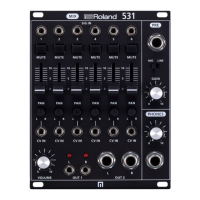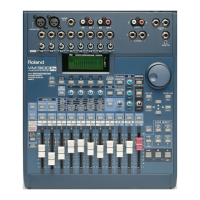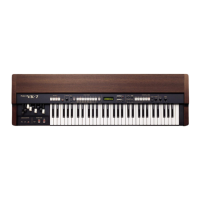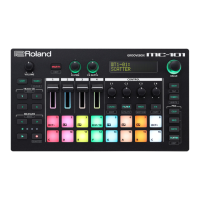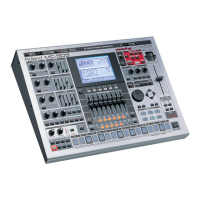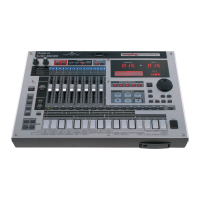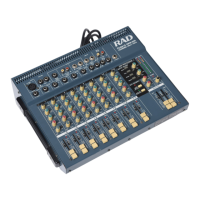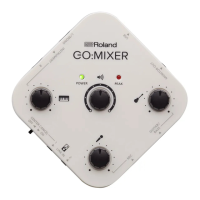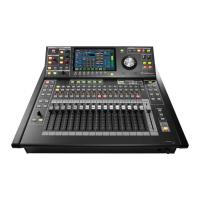Inputting/deleting a motion
44
Inputting/deleting a motion
What’s a motion?
When you play a pattern, you can record and play back the knob operations and MIDI message-related changes such as control
change and pitch bend messages received, as “motions”.
For instance, you can use motions to make the FREQ knob gradually increase the brightness of the tone, make the DECAY knob
change the sound from staccato to legato and so on. These motions can be used when you create a pattern.
On the S-1, you can record and play back the changes you make to a maximum of eight parameters and to the pitch bend for each
pattern.
* MIDI control change and pitch bend messages can only be recorded using type D (real-time recording).
* When the parameter changes that are recorded to a motion play back, the changes in value may differ slightly from what
you actually input, due to computational error.
You can see and listen to how motions work by playing the following preset patterns.
● 1-04: Reverb Level
● 1-06: Env Attack
● 1-08: Osc Draw Multiply
● 1-10: Reverb Level, Osc Chop Comb
● 1-11: Filter Frequency, Env Decay
● 1-12: LFO Rate, Env Attack, Env Release
● 1-13: Filter Frequency, Filter Resonance
Inputting a motion
There are three ways to input a motion, as explained in “Input motion” of “Methods of input using the sequencer(P.32)”.
Hold down a step pad and turn the knobs.
Turn the knobs when you’re on the selected step.
Turn the knobs along with the step that’s playing.
“FULL” is indicated if you try to record more parameters than the maximum number that can be registered in a motion.
Deleting a motion
“CLr.N” blinks, and the unit waits for you to execute or cancel.
There are two kinds of steps that are targeted for deletion, as explained in “Delete all motions” of “Methods of input using the
sequencer(P.32)”.
All motions in the pattern are deleted.
All motions in the selected step are deleted.
When you press pad [2] (ENTER), “donE” appears, and the data is deleted.
* If “CLr.N” is blinking while the unit is waiting and you turn a knob, the parameter for only that knob is deleted.
Once the data is deleted, “CLr” is shown. If the unit can’t find the parameter to delete within the pattern, “nonE” is indicated.
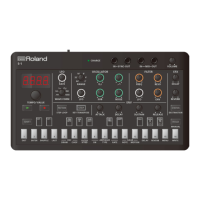
